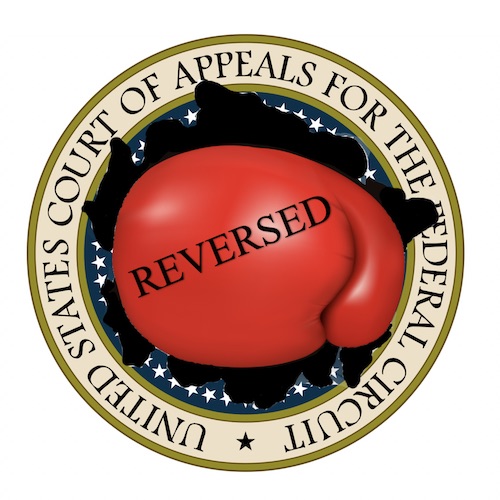“Where, as here, ‘a publication’s purpose is “dialogue with the intended audience,” that purpose indicates public accessibility.’” – CAFC
 On February 8, the U.S. Court of Appeals for the Federal Circuit issued a precedential decision in Weber, Inc. v. Provisur Technologies, Inc. that vacated rulings by the Patent Trial and Appeal Board (PTAB) nixing validity challenges by American grill maker Weber against Provisur’s commercial food slicer patent claims. The Federal Circuit reversed the PTAB on claim construction and also found that the Board misapplied CAFC precedent on the level of public dissemination required before printed publications can qualify as prior art.
On February 8, the U.S. Court of Appeals for the Federal Circuit issued a precedential decision in Weber, Inc. v. Provisur Technologies, Inc. that vacated rulings by the Patent Trial and Appeal Board (PTAB) nixing validity challenges by American grill maker Weber against Provisur’s commercial food slicer patent claims. The Federal Circuit reversed the PTAB on claim construction and also found that the Board misapplied CAFC precedent on the level of public dissemination required before printed publications can qualify as prior art.
Weber filed petitions for inter partes review (IPR) proceedings at the PTAB to challenge the validity of claims from two Provisur patents asserted against Weber in district court infringement litigation. Those patents, both titled High Speed Slicing Machine, are U.S. Patent No. 10625436 and U.S. Patent No. 10639812. Weber challenged claims of both patents for obviousness based on combinations of U.S. patent filings and operating manuals that were distributed by Weber to explain the operation of its commercial food slicers to customers.
PTAB Reverses Course on Public Availability of Prior Art Operating Manuals
Upon institution, the PTAB concluded that the company’s operating manuals were sufficiently available to the public to qualify as a prior art printed publication. However, in the final written decisions terminating those IPRs, the PTAB instead found that Weber was too restrictive of its operating manual, which had only been distributed to ten unique customers. Further, the Board found that the public availability of Weber’s operating manuals was limited subject to certain confidentiality restrictions, including intellectual property provisions and copyright notices printed within the manuals. Even if the operating manuals qualified as prior art, the PTAB still found that the combination of prior art references did not disclose the “disposed over” and “stop gate” claim limitations in Provisur’s patents.
On appeal, the Federal Circuit found that the PTAB’s misapplied case law precedent on public accessibility stemming from the appellate court’s 2009 decision in Cordis Corp. v. Boston Scientific Corp. In that case, the Federal Circuit found that academic monographs describing intravascular stents did not qualify as prior art printed publications due to low distribution as well as the impact of academic norms, which created an expectation that the monographs would remain confidential following distribution to a few academic colleagues and potential commercial partners.
As explained by the Federal Circuit, Cordis is readily distinguishable from the present appeal. Whereas the holding in Cordis was motivated by academic confidentiality norms, Weber’s operating manuals were rather intended for dissemination to members of the public interested in maintaining and troubleshooting Weber’s commercial food slicers. “Where, as here, ‘a publication’s purpose is “dialogue with the intended audience,” that purpose indicates public accessibility,’” the Federal Circuit concluded.
Not only did expert testimony show that Weber distributed operating manuals with sales of each commercial food slicer, but that interested members of the public could obtain manuals from Weber employees upon requests. In footnotes, the Federal Circuit added that there was no minimum number of occasions of access that was dispositive to the public accessibility inquiry, and that the high cost of the slicers themselves did not render the operating manuals sufficiently inaccessible.
IP Provisions Within Operating Manuals Do Not Create Confidentiality Restrictions
In reaching its contrary finding, the PTAB placed an inordinate emphasis on intellectual property provisions that the Board interpreted as confidentiality restrictions. The Federal Circuit found that the copyright notice allows original owners of Weber’s commercial food slicers, as well as their personnel, to copy the manual for internal use. Evidence also showed that Weber instructed original owners to transfer their operating manuals when selling their slicer to third parties, further proving the public dissemination of those materials.
Having dealt with the prior art printed publication issue, the Federal Circuit went on to reverse both of the PTAB’s claim constructions challenged on appeal by Weber. In analyzing whether the feed apparatus, conveyor belt and grippers are “disposed over” the food article loading apparatus, the Federal Circuit noted that the plain language of the claims only requires that the feed apparatus be generally positioned above the loading apparatus. The Board’s narrower construction, which required that the feed and conveyor components be positioned “in vertical and lateral alignment” with the loading apparatus, improperly prescribed a more particularized meaning that wasn’t supported by the patents’ specifications.
The Federal Circuit also found that the PTAB improperly ignored Weber’s expert testimony on the “stop gate” claim limitation, which requires that the stop gate supports food articles when the lift tray is lowered to receive new food articles. Although Weber’s operating manuals disclose such a stop gate, the PTAB discredited those disclosures because product diagrams in the manuals did not show food articles actually in the slicer or food conveyor. As the appellate court explained, because the stop gate is expressly disclosed by the operating manuals, “an image of a food article is not needed to understand those teachings.”
Having considered Provisur’s remaining arguments unpersuasive, the Federal Circuit vacated the PTAB’s rulings that Weber failed to prove the unpatentability of the ‘436 and ‘812 patents. The case has been remanded to the PTAB for further rulings consistent with the Federal Circuit’s opinion.
Image Source: Deposit Photos
Image ID: 10042948
Author: almoond

![[IPWatchdog Logo]](https://ipwatchdog.com/wp-content/themes/IPWatchdog%20-%202023/assets/images/temp/logo-small@2x.png)

![[Advertisement]](https://ipwatchdog.com/wp-content/uploads/2024/04/UnitedLex-May-2-2024-sidebar-700x500-1.jpg)
![[Advertisement]](https://ipwatchdog.com/wp-content/uploads/2024/04/Artificial-Intelligence-2024-REPLAY-sidebar-700x500-corrected.jpg)
![[Advertisement]](https://ipwatchdog.com/wp-content/uploads/2024/04/Patent-Litigation-Masters-2024-sidebar-700x500-1.jpg)

![[Advertisement]](https://ipwatchdog.com/wp-content/uploads/2021/12/WEBINAR-336-x-280-px.png)
![[Advertisement]](https://ipwatchdog.com/wp-content/uploads/2021/12/2021-Patent-Practice-on-Demand-recorded-Feb-2021-336-x-280.jpg)
![[Advertisement]](https://ipwatchdog.com/wp-content/uploads/2021/12/Ad-4-The-Invent-Patent-System™.png)






Join the Discussion
No comments yet. Add my comment.
Add Comment